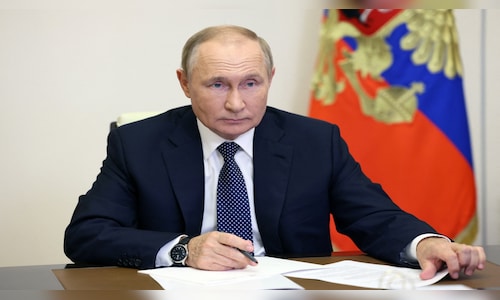
Russian President Vladimir Putin has approved the recent revisions to the country’s nuclear doctrine and plans to formalise it as necessary. The decision was announced as a response to the United States’ “reckless” decision of allowing Ukraine to carry out missile strikes on Russian soil.
This document spells out all the circumstances under which President Putin can consider using the world’s largest atomic arsenal.
In September 2024, Putin had warned that any approval by the Western countries to Kyiv to use long-range missiles against Moscow would signify “the direct involvement of NATO countries, the United States and European countries” in the war.
The last such document, emphasising the pivotal role of nuclear weapons in ensuring sovereignty and territorial integrity, was prepared 4 years ago in 2020. It discussed four scenarios under which these weapons can be deployed.
First, on receiving intelligence regarding incoming ballistic missiles. Second, the launch of a nuclear attack or use of weapons of mass destruction against Russia or its allies. Third, any attack on a country’s nuclear command, control and communication infrastructure. Fourth, any attack threatening ‘the very existence’ of the Russian state.
Beyond these conditions, the policy also suggested Moscow’s willingness to resort to nuclear weapons for de-escalating conflicts and putting an end to wars on terms that favour the Russian state. With the recent use of US-made ATACMS missiles by Kyiv against Moscow, the Russian President has ‘lowered the threshold” for a nuclear strike as a response to a broader range of conventional attacks.
The nuclear doctrine of Russia has evolved over the last 15 years. “Changes in 2010 and 2020 seemed relatively benign. In September 2024, Russian President Vladimir Putin announced additional modifications, which appear more meaningful”, according to the Brookings Institution.
What’s the new Russian nuclear doctrine?
While discussing the “extreme measures to protect the country’s sovereignty”, the new nuclear doctrine includes Belarus as protected under Russia’s nuclear umbrella. This was the first time an ‘ally’ had been distinguished. This shift also highlights the possibility of Russia deploying tactical nuclear weapons in Minsk.
The new policy also introduces an ambiguous phrasing, changing the 2020 version’s condition of ‘threat to country’s existence’ to ‘critical threat to sovereignty’. According to the American think tank Center for Strategic and International Studies (CSIS), this change is to lower the threshold for nuclear use, aligning with Russia’s strategy of ‘escalating to de-escalate’.
Furthermore, the new version of the policy holds third-party states involved in the attack against Moscow accountable. Indirectly, though quite clearly, it is aimed at NATO countries. “The updated version of the document proposes that aggression against Russia by any non-nuclear-weapon state, but with the participation or support of a nuclear-weapon state, should be considered as a joint attack on the Russian Federation,” said Putin.
Lastly, according to the new doctrine, any ‘aerospace attacks’ including drones, missiles, and aircraft could trigger a nuclear response from Russia.
Would Russia launch a nuclear attack if its nuclear forces came under joint western attack? “Almost certainly”, wrote Steven Pifer, Former United States Ambassador to Ukraine in his ‘How credible is Russia’s evolving nuclear doctrine?’.
Would Moscow deploy nuclear weapons as Ukraine attacks Russia’s Bryansk region with US’ ATACMS? “Moscow wants the West to think so”, Pifer mentioned.



